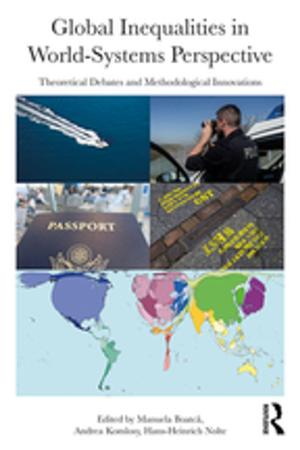Architecture and Urban Form in Kuala Lumpur
Race and Chinese Spaces in a Postcolonial City
Nonfiction, Art & Architecture, Architecture| Author: | Yat Ming Loo | ISBN: | 9781317179221 |
| Publisher: | Taylor and Francis | Publication: | April 8, 2016 |
| Imprint: | Routledge | Language: | English |
| Author: | Yat Ming Loo |
| ISBN: | 9781317179221 |
| Publisher: | Taylor and Francis |
| Publication: | April 8, 2016 |
| Imprint: | Routledge |
| Language: | English |
Kuala Lumpur, the capital city of Malaysia, is a former colony of the British Empire which today prides itself in being a multicultural society par excellence. However, the Islamisation of the urban landscape, which is at the core of Malaysia’s decolonisation projects, has marginalised the Chinese urban spaces which were once at the heart of Kuala Lumpur. Engaging with complex colonial and postcolonial aspects of the city, from the British colonial era in the 1880s to the modernisation period in the 1990s, this book demonstrates how Kuala Lumpur’s urban landscape is overwritten by a racial agenda through the promotion of Malaysian Architecture, including the world-famous mega-projects of the Petronas Twin Towers and the new administrative capital of Putrajaya. Drawing on a wide range of Chinese community archives, interviews and resources, the book illustrates how Kuala Lumpur’s Chinese spaces have been subjugated. This includes original case studies showing how the Chinese re-appropriated the Kuala Lumpur old city centre of Chinatown and Chinese cemeteries as a way of contesting state’s hegemonic national identity and ideology. This book is arguably the first academic book to examine the relationship of Malaysia’s large Chinese minority with the politics of architecture and urbanism in Kuala Lumpur. It is also one of the few academic books to situate the Chinese diaspora spaces at the centre of the construction of city and nation. By including the spatial contestation of those from the margins and their resistance against the state ideology, this book proposes a recuperative urban and architectural history, seeking to revalidate the marginalised spaces of minority community and re-script them into the narrative of the postcolonial nation-state.
Kuala Lumpur, the capital city of Malaysia, is a former colony of the British Empire which today prides itself in being a multicultural society par excellence. However, the Islamisation of the urban landscape, which is at the core of Malaysia’s decolonisation projects, has marginalised the Chinese urban spaces which were once at the heart of Kuala Lumpur. Engaging with complex colonial and postcolonial aspects of the city, from the British colonial era in the 1880s to the modernisation period in the 1990s, this book demonstrates how Kuala Lumpur’s urban landscape is overwritten by a racial agenda through the promotion of Malaysian Architecture, including the world-famous mega-projects of the Petronas Twin Towers and the new administrative capital of Putrajaya. Drawing on a wide range of Chinese community archives, interviews and resources, the book illustrates how Kuala Lumpur’s Chinese spaces have been subjugated. This includes original case studies showing how the Chinese re-appropriated the Kuala Lumpur old city centre of Chinatown and Chinese cemeteries as a way of contesting state’s hegemonic national identity and ideology. This book is arguably the first academic book to examine the relationship of Malaysia’s large Chinese minority with the politics of architecture and urbanism in Kuala Lumpur. It is also one of the few academic books to situate the Chinese diaspora spaces at the centre of the construction of city and nation. By including the spatial contestation of those from the margins and their resistance against the state ideology, this book proposes a recuperative urban and architectural history, seeking to revalidate the marginalised spaces of minority community and re-script them into the narrative of the postcolonial nation-state.















